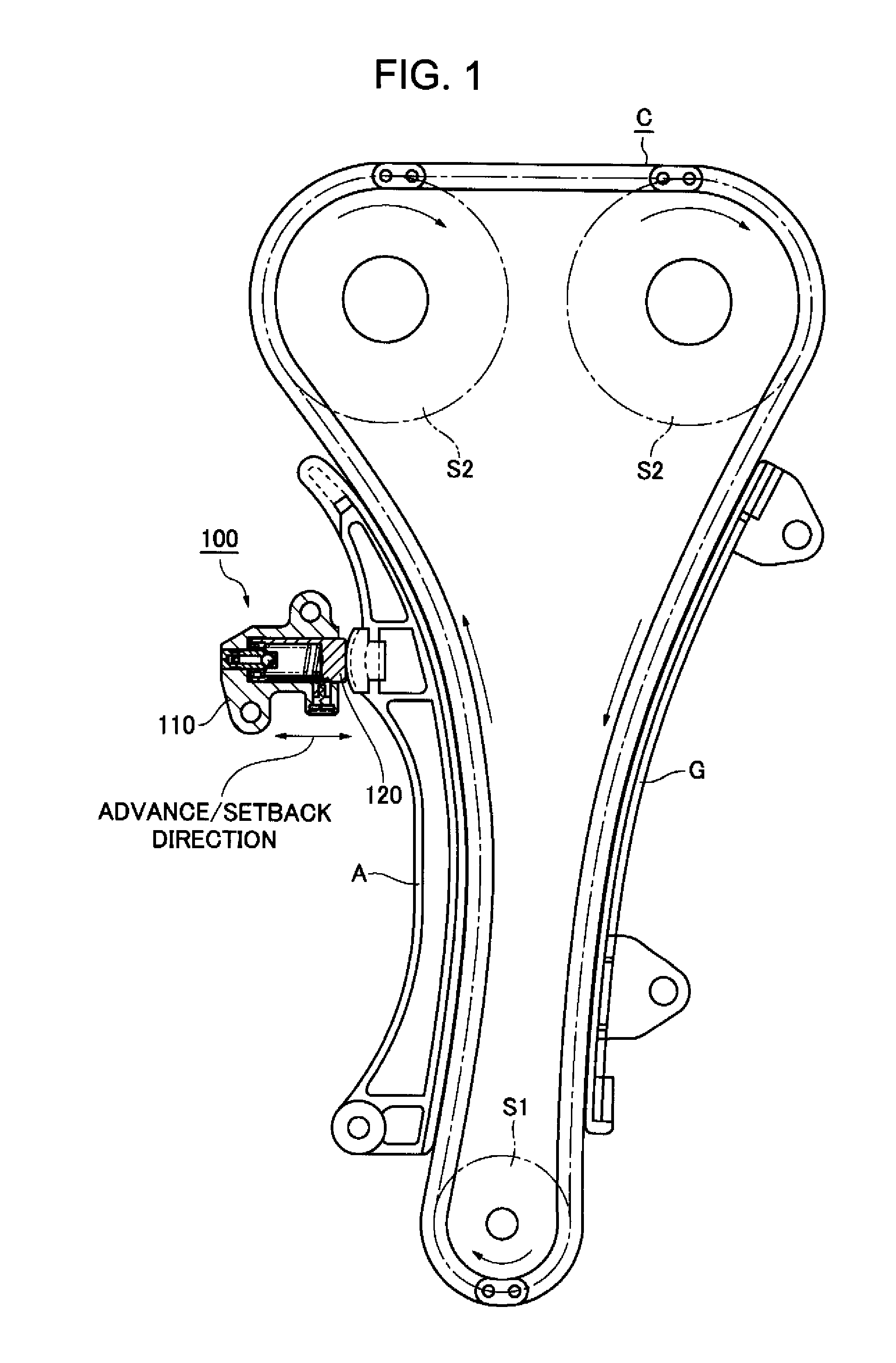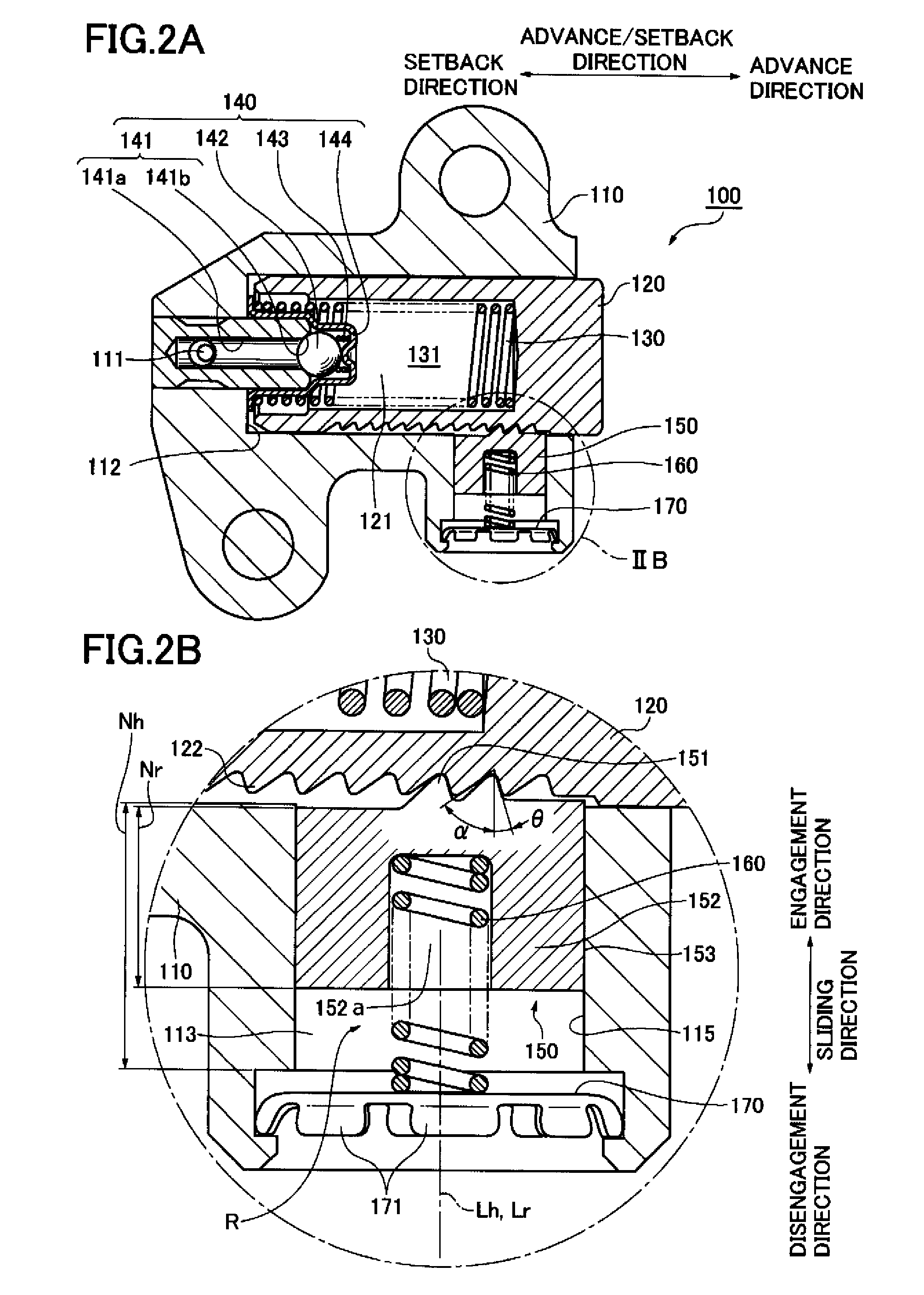Ratchet-type tensioner
a tensioner and ratchet-type technology, applied in the direction of belts/chains/gearings, mechanical equipment, belts/chains/gearings, etc., can solve the problems of generating additional noise, reducing the manufacturing cost of parts, and reducing the number of parts and their manufacturing costs, so as to prevent the seizing of the plunger and the reliable prevention of the seizing
- Summary
- Abstract
- Description
- Claims
- Application Information
AI Technical Summary
Benefits of technology
Problems solved by technology
Method used
Image
Examples
Embodiment Construction
[0050]As shown in FIG. 1, a ratchet-type tensioner 100 is attached to a machine, e.g., an engine not shown, on the slack side of an endless flexible traveling transmission medium in the form of an engine timing chain C. The timing chain is engaged with, and driven by a crankshaft sprocket S1, and engaged with and in driving relationship with a pair of camshaft sprockets S2.
[0051]The ratchet-type tensioner 100 comprises a housing 110, and a plunger 120 that projects out of the housing and is constrained by the housing for movement along an advance / setback direction. The plunger 120 applies tension to the slack side of the timing chain C, i.e., the side that travels from the crankshaft sprocket S1 toward one of the camshaft sprockets S2. The plunger applies tension to the chain through a lever A on which the slack side of the chain slides. The lever is pivoted on the engine block, and presses the plunger 120 at a location remote from the lever's pivot axis.
[0052]A stationary guide G f...
PUM
 Login to View More
Login to View More Abstract
Description
Claims
Application Information
 Login to View More
Login to View More - R&D
- Intellectual Property
- Life Sciences
- Materials
- Tech Scout
- Unparalleled Data Quality
- Higher Quality Content
- 60% Fewer Hallucinations
Browse by: Latest US Patents, China's latest patents, Technical Efficacy Thesaurus, Application Domain, Technology Topic, Popular Technical Reports.
© 2025 PatSnap. All rights reserved.Legal|Privacy policy|Modern Slavery Act Transparency Statement|Sitemap|About US| Contact US: help@patsnap.com



